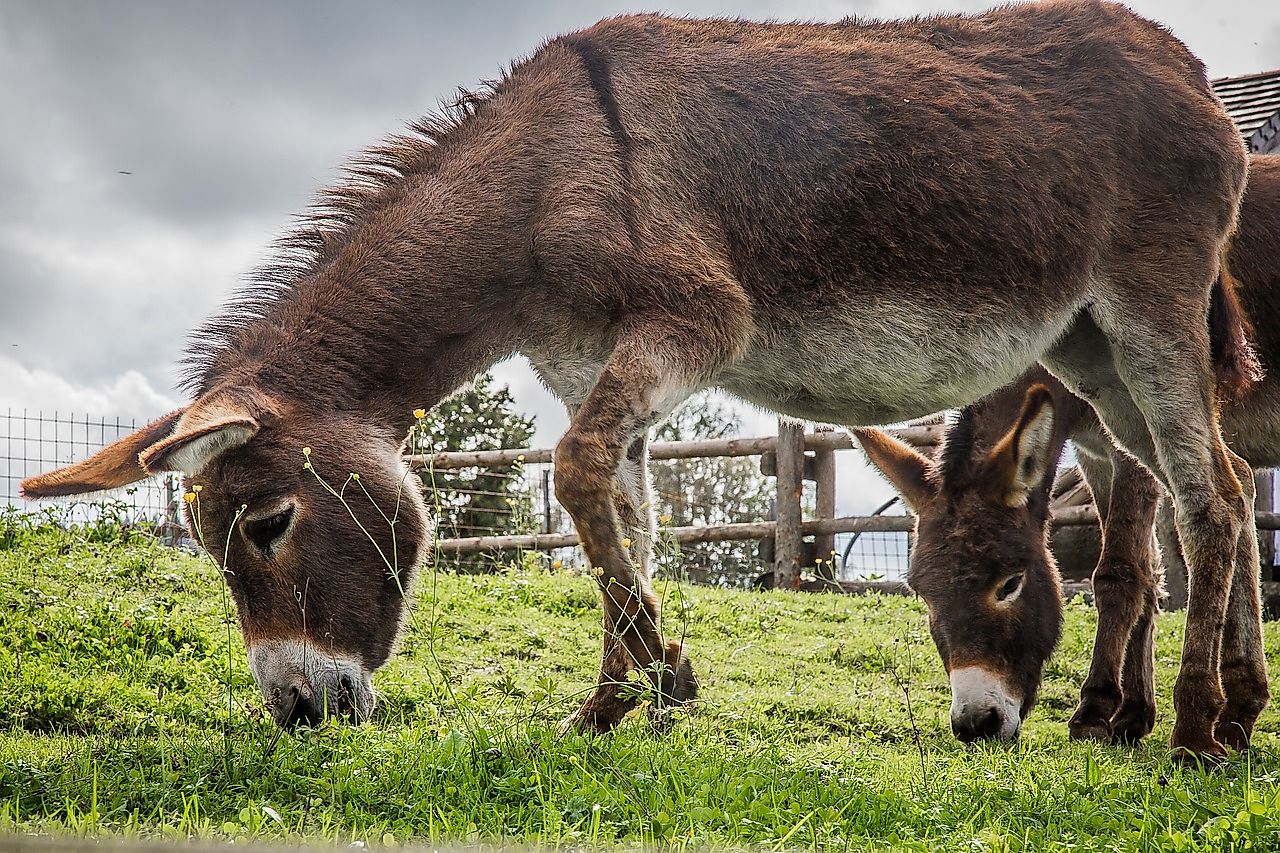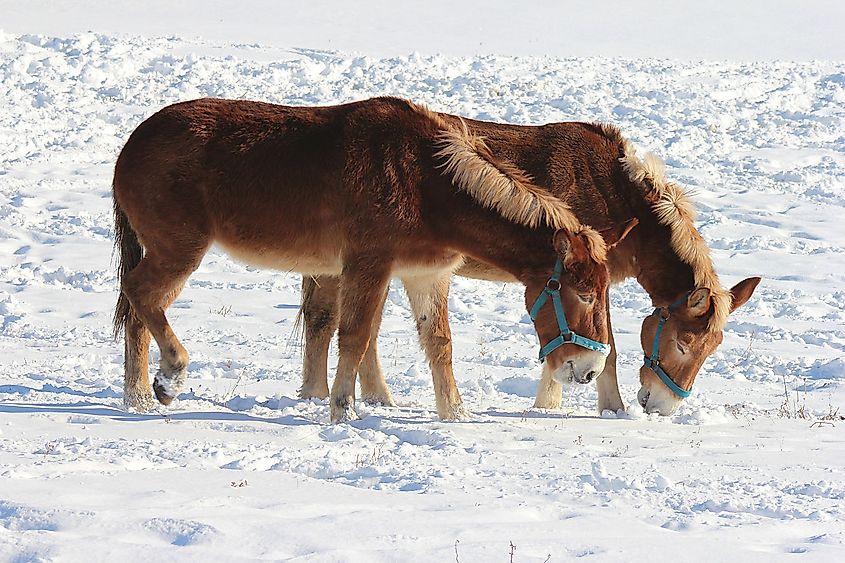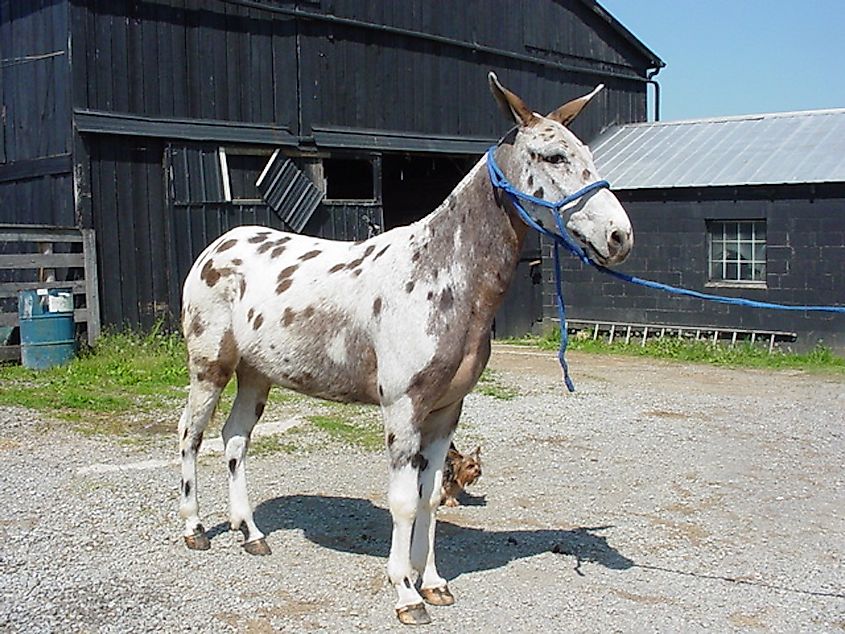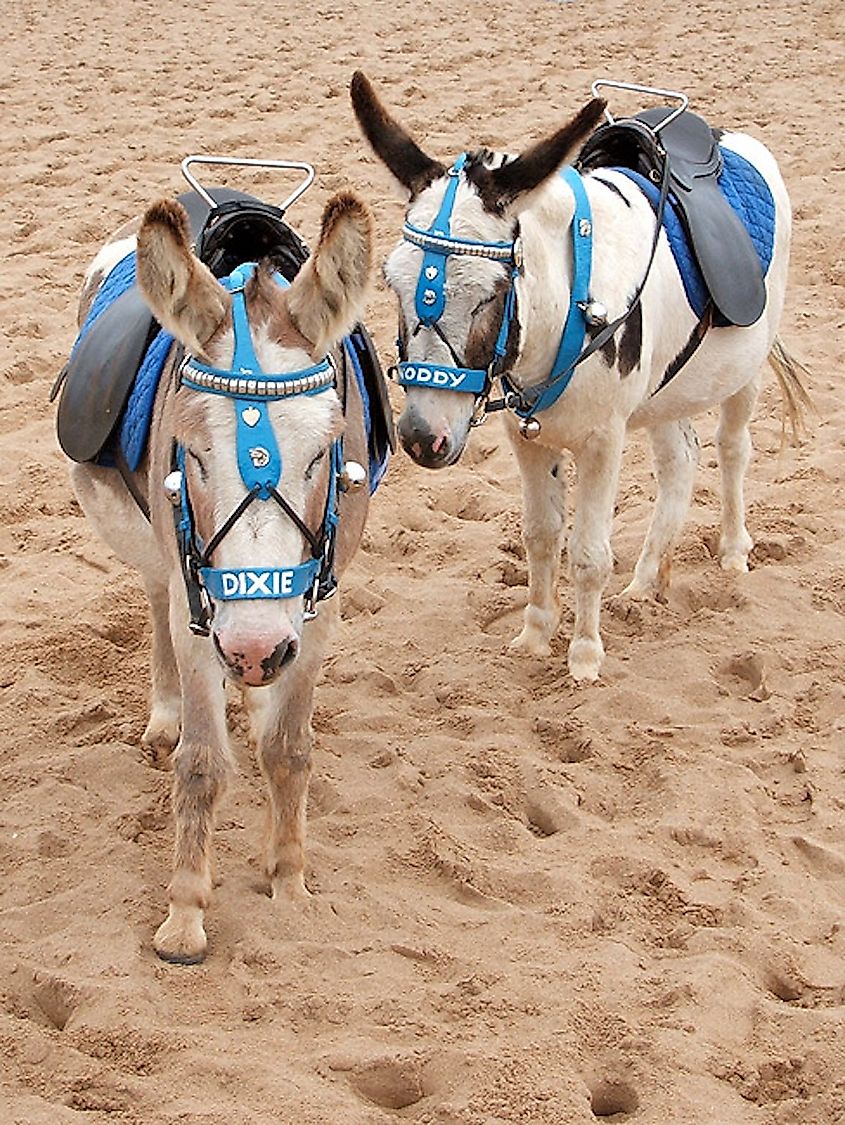What Are The Differences Between A Mule And A Donkey?

- Donkeys can live for 40 plus years.
- Donkeys do not like rain.
- A large majority of mules (approx. 99%) are sterile.
Although the terms mule and donkey are often used interchangably they do not refer to the same animal. A mule is a hybrid animal which is the result of breeding a donkey with a horse. A donkey is a seperate animal and member of the horse or Equidae family. These two animals are very similar in regards to their appearance, traits, and behavior but there are a number of anatomical and biological differences between them.
Biology

In terms of basic biological make up one of the main differences between these two very similar animals is the fact that while donkeys can reproduce, mules are infertile. Since they cannot mate mules are incapable of producing offspring. Donkeys are also born with 62 chromosomes while mules have 63. Although both animals are used for labor intensive work mules are widely thought to be better at handling heavy loads than donkeys. This is due to the fact that donkeys are known for losing patience while struggling with excess weight. Mules are also regarded to be better at physically demanding work because they have more stamina. Another difference between mules and donkeys involves the mules' ability to jump up from a standing position which is a feat that donkeys are incapable of performing.
Due to the fact that the ability to reproduce is one of the major biological differences between mules and donkeys, it's interesting to note that while male mules may mate these animals don't have the haploid cells which are required in order to successfully produce offspring. In order to better curb the aggressive behavior of male mules towards females, most animals are castrated.
Lifespans
Mules generally have a somewhat shorter lifespan than their donkey counterparts. Mules may live between thirty and forty years while a donkey's lifespan can range from thirty to as much as fifty years. The lifespans for both animals is largely dependent upon their individual living and working conditions. Animals who toil under heavy loads for extended periods of time may only live to an age of between twelve and fifteen years.
Mule

Mules are hybrid animals which are born after a female horse (or mare) mates with a male donkey (called a jack). Physically they more closely resemble horses more than do their donkey counterparts. This is particularly true when it comes to examining the mule's ears which are smaller in size than a donkey's and more in line with the physical structure of horse ears. This is also true in terms of the mule's tail which looks a lot like that of a horse's tail. Conversely, the tail of a donkey is coarse and looks much more similar to that of a cow's. Mules are characterized by their short manes and heads as well as thin legs. Mules are also taller than donkeys. The two animals also display subtle physical differences in regards to the appearance of their teeth, neck shape, and coat.
Mules are used in a variety of industries and environments throughout the world including mining, farming, and transporting heavy loads as draft animals.
Male mules are called jack or john while females are referred to as molly.
Mules are said to have harder hooves than that of horses. This is another reason why they are able to handle carrying heavy loads over long distances.
The mule's coat is usually brown, grey, or black but a small percentage may be white, buckskin, or palomino.
There are approximately twelve million mules in the world with most living in countries such as China. Mexico, and Brazil.
Donkey

Also commonly referred to as an ass or burro, the donkey is characterized by the loud braying sounds it makes as well as the large size of its ears which are shaded darker at the tips as well as at the base of its ears. Depending on factors such as breeding these hardy animals come in a range of sizes. Typically in terms of height these domesticated animals may measure between 31 and 63 inches at their withers (the ridge between a donkey's shoulder blades). A fully grown donkey may reach a weight of between 180 and 1,060 pounds. A donkeys lifespan is largely dependent on the animal's living conditions. In poorer countries donkeys have long been utilized as efficient beasts of burden; therefore they have shorter lifespans than similar animals living less regimented and more comfortable lifestyles in countries such as the U.S.
Male donkeys are called jack while females are referred to as jenny.
Donkeys have short fur on both their manes and tails as well as a dark stripe running along their backs from the animal's head down to its tail. They also have a stripe across their shoulders. Other physical traits include narrow shaped hooves which are particularly useful when the animal is travelling over rough terrain.
The donkey's coat is typically grey but may also be black or a dark shade of brown.
Donkeys are regarded to be intelligent animals with the ability to remember places and other donkeys for a significant amount of time. They are herd animals which are superior to horses when it comes to their capacity to travel over a variety of terrains.
According to recent statistics there are about nineteen million donkeys living in various geographical regions across the globe. The majority of these animals reside in China and Pakistan while large numbers of donkeys can also be found in Egypt, Ethiopia, and Mexico. Donkeys are also used in regions where horses fail to thrive such as Mongolia, Tibet, and northeastern portions of Africa.
Common Traits
Although mules and donkeys have many differences, they are also a lot alike and share many common attributes and characteristics. Both animals are mammals and members of the order Perissodactyla. This order refers to animals which are plant eaters and who possess one to three hoofed toes on each back foot. Other anim als in this order include zebras, rhinoceros, and tapirs.
Mules and donkeys are both herbivores who feed on similar plant based diets. Most of these creatures live on natural materials such as weeds, straw, and barley.











